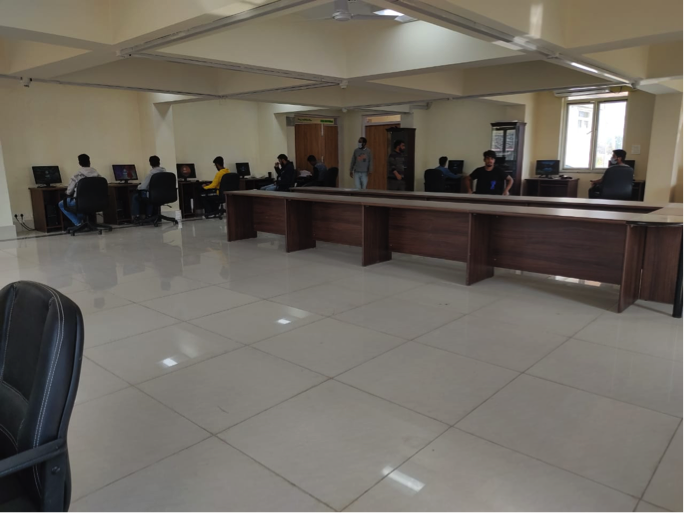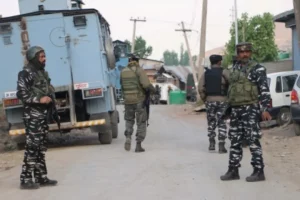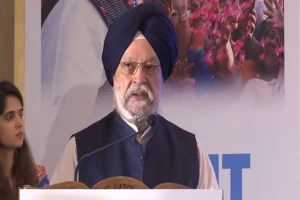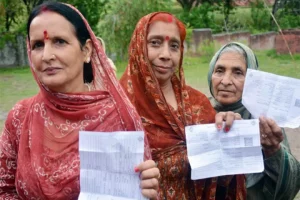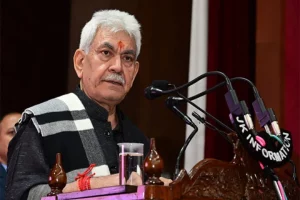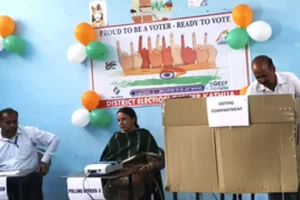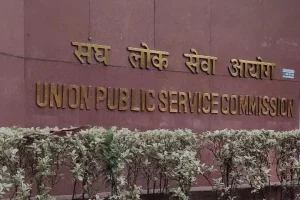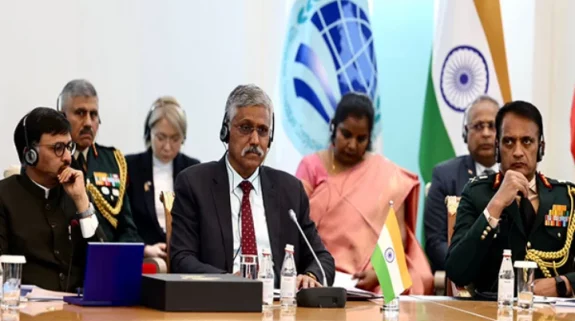The entry of the world-famous Kashmir saffron in the Geographical Indications Registry and the resultant GI certification is expected to give a significant fillip to the king of spices in the international market this year. The e-auction centre at Indian International Trade Saffron Spice Park at Dussu in Pampore, has been visited by a record number of the saffron growers in the last three weeks.
This Rs 40 crore facility with a quality control laboratory has been created by the National Horticulture Board under National Saffron Mission, mainly to help the growers maintain the quality and get the best possible price of their produce in the domestic as well as international market. Its foundation stone was laid by the then Union Agriculture Minister Radha Mohan Singh in August 2014. It was made fully functional in 2020.
The saffron spice originates from a flower called crocus sativus—commonly known as the “saffron crocus.”
According to the Minister, it was a matter of major concern that the area under saffron cultivation in Kashmir had declined from 5,707 hectares in 1996 to 3,875 hectares in 2010-11, bringing down production from 3.13 kg/hectare to 2.47 kg/hectare. In the last 8 years, it has further reduced—according to officials to 2,000 hectares but according to the growers to just 1,200 to 1,500 hectares.
“We are still far below the levels we had achieved over 10 years back but if you compare the produce of the last 4 years, we have improved in 2021 and 2022”, Muzamil Salmani, incharge e-Auction Centre at Indian International Trade Saffron Spice Park told India Narrative. However, much more than the interventions of the National Saffron Mission, he attributed the ‘marginal increase’ to the rains on time this year.
According to Salmani, 1500 growers have visited the e-auction centre at Dussu in the last three weeks. “The collection season is still underway. It has been extended due to high inflow of the aspirants”, Salmani said. All the required facilities, including quality control testing, packaging, labelling, GI tagging and e-marketing are available at the centre.
As compared to the local market rate of Rs 130-150/gram , the e-auction centre is getting the growers Rs 200-220/gm. “Mongra (super refined saffron) is now selling at Rs 350/gram”, said another official. He said that the e-auction centre had fixed the minimum rate of Rs 225/gm.
While the officials are expecting Rs 400 crore, most of the growers insist that this year’s produce would fetch them a total of Rs 200-240 crore. Now Kashmir Agriculture Department is demanding another fund of Rs 385 from the Union Government for Phase-II of the National Saffron Mission.
The Pampore area of Kashmir enjoys the distinction of producing the world’s best quality saffron, even as Iran continues to be the largest producing country. Safranal (aroma strength) and Crocin (colouring strength) and picrocrocin determine the quality of the saffron. While 200 is the standard colouring power (crocin) of Grade-I saffron, the saffron produced in Pampore has crocin between 280 and 300. Safranal for Grade-I must be 20. The Pampore saffron has 40-50 as compared to 20 of the Iran saffron. “The best quality saffron dissolved in water has yellow colour. If it is red, it is adulterated with a chemical”, Salmani said.
The GI certification would go a long way to stop adulteration and trading of the Iran saffron as the Kashmir saffron. The adulteration of saffron was earlier affecting the economic interests of the farmers associated with this crop. To give a boost to saffron production in Kashmir, the J&K Government has launched new initiatives including the introduction of GI tagging. GI sign is used on products that have a specific geographical origin and possess qualities or a reputation that are due to that origin.
Saffron growers are hopeful that they will now get a better price for their produce after the introduction of GI tag to the saffron grown here. Kashmiri Saffron is grown at an altitude of 1,600 m to 1,800 m above mean sea level, which adds to its uniqueness and differentiates it from other saffron varieties available across the world. The spice is also grown in smaller quantities in some areas of Budgam, Kishtwar and Srinagar regions of Jammu & Kashmir.
The growers complained that out of the total funds of Rs 377 crore received from the National Saffron Mission (Phase-I), an amount of Rs 150 crore had been paid to the Union Territory’s Mechanical Engineering Department for providing 92 high-calibre water pumps.
“They (engineers of the Mechanical Engineering Department) claimed an expenditure of Rs 100 crore on the pumps and Rs 50 crore on the supply lines. The Chief Engineer gave an undertaking of making all the 100-odd pumps functional last year. But not a single pump was functional this year”, said a prominent saffron grower of Chandhar, Pampore. “Had the promised pumps been made functional, our produce would have doubled this year”, he added.
While officials of Kashmir Agriculture Department claim production of 13 metric tonnes, the growers invariably put the figure between 7-8 MTs in 2022 as compared to 6-7 MTs in 2021. “The increase of around one metric ton this year is due to the rains at a crucial time before the harvesting”, said Mohammad Shafi, a grower from Pampore.
Iran is the largest producer of saffron in the world and India is a close competitor. However, with the GI tag of Kashmir saffron, India becomes the only saffron producing country for which GI has been assigned which will result in more prominence in the export market thereby boosting exports as well as helping the farmers to get the best remunerative price for economic sustainability.






